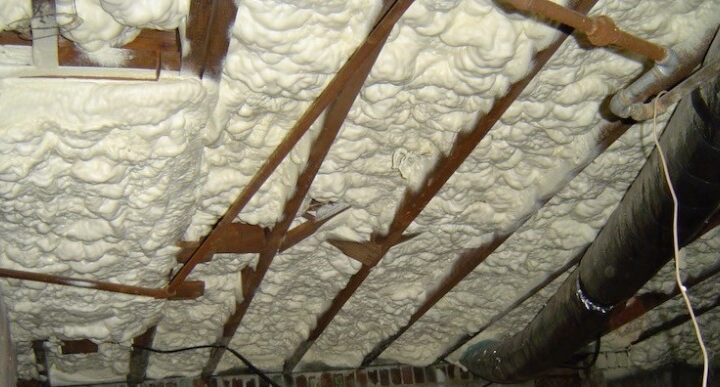
Having your home properly insulated is critical in ensuring utmost comfort in daily living, whatever the weather condition may be. Maintaining just the right temperature in your living space will ensure productivity during the day and restful sleep at night. Additionally, insulation helps control and maintain indoor air quality, which contributes to the overall health and well-being of the home’s occupants.
However, there are many methods for installing insulation, all of which depend on the type of house you have and your present living conditions. You may have inherited an old house or moved into a previously owned property which has its own existing insulation system. Or, you may be remodeling your current house or are designing and constructing a new one from the ground up. Whichever of these applies to your situation, you might be wary of how much the work on an insulation system will cost you.
That said, which type of insulation should you consider? Here’s an argument for spray foam insulation, one of the most effective insulation solutions available today.
How Does Spray Foam Measure Up to Other Insulation Types?
Blanket insulation (also known as batt and roll insulation) is one of the most common types of insulation that you can easily purchase and install yourself in your home. It’s usually made of materials such as mineral wool, plastic fibers such as fiberglass, or natural fibers such as sheep wool. There are also foam boards made of polystyrene or polyurethane that can be applied on walls. Lastly, there are insulation products with reflective films that can deflect radiant heat from the sun, which in turn will help regulate indoor temperatures.
During construction of a new house, insulation can also be incorporated directly into the structure through concrete forms, concrete blocks, or structural panels that have built-in insulation. For existing structures and walls, there’s actually no need to tear them down just to install insulation. You can work around what you have through more innovative and convenient methods of installation. Spray foam insulation is something you might want to consider for this purpose.
The use of spray foam insulation is a method that many homeowners and building professionals prefer for a number of reasons. Spray foam is based on the concept of chemical reaction between two substances. When they are mixed, they form a foam material that is capable of expanding up to 60 times the liquid volume. The nature of the foam enables it to penetrate small spaces, crevices and cracks, thus achieving a tight seal. Spray foam can be applied on an open wall or injected into existing walls.
Admittedly, spray foam insulation may be a bit more costly than other methods. However, its efficiency in attaining proper insulation provides immediate and long-term value. You will be able to see this for yourself when it comes to your savings in your electricity bill. Here are the other advantages of spray foam insulation that make it an ideal choice for your home.
It Strengthens Your Home Against the Elements
When insulation foam hardens, it adds density to your home’s walls and improves its strength and structural integrity. This is especially useful for houses located in places that experience extreme weather conditions. Spray foam’s impermeable seal also creates a barrier that prevents water from entering spaces such as basements and attics.
It Does Not Encourage the Growth of Harmful Organisms
Because insulation foam is able to keep water, moisture, and even air out, there is little to no opportunity for harmful mold and mildew to grow. Spray foam’s insulation material is also made up of the polymer, which these organisms cannot feed on. This makes spray foam a better performer against insulation material made of fiberglass or cellulose, which can still absorb water and moisture.
It Helps Improve Indoor Air Quality
With other insulation systems, there’s still a chance that dust, pollen and other types of airborne allergen can get through miniscule openings on the building envelope of your home. By creating a better seal, spray foam insulation is also better able to deal with this problem. By preventing the ingress of these microscopic elements into your home, spray foam insulation also lessens your exposure to health risks like allergies and respiratory ailments. You and your family can breathe easier with better indoor air quality, all thanks to the spray foam system.
It Lasts after Years or Even Decades of Use
Another advantage of the inert polymer constitution of spray foam insulation is its durable and firm shape. If you go with spray foam, you will only need to change your home’s insulation every 20 years or so. That also makes spray foam a more environment-friendly option, as you purchase and consume less waste from replacing insulation material in your home.
It Gives Good Returns on Your Investment
Spray foam insulation is durable and lasts for a long time. It enables considerable cost savings not just in terms of replacement, but also in terms of electricity consumption. According to experts, spray foam insulation provides higher R-value for the same thickness of other materials like the usual batt or blanket roll. Despite the initial high cost of installing spray foam insulation, you can consider it a worthwhile investment in beautifying and protecting your home.
Conclusion
If you are in the market for renovating or replacing the insulation system of your home, spray foam insulation may be an ideal solution for you. It may take a bit of work and an upfront investment, but the benefits it will bring your home will be worth it in the long run.
Leave a Reply